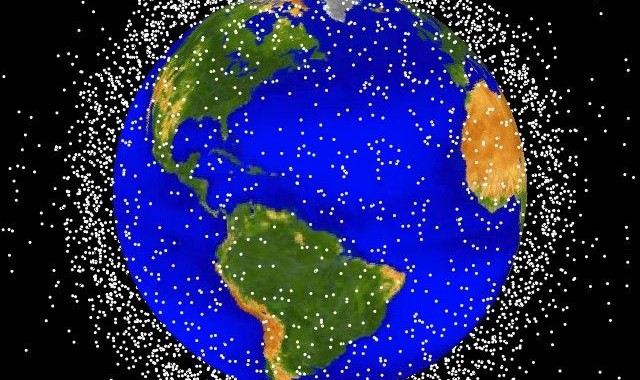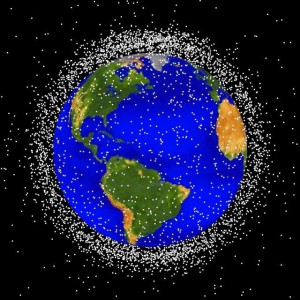
LEO is the region of space within 2,000 km of the Earth's surface. It is the most concentrated area for orbital debris. Approximately 95% of the objects in this illustration are orbital debris, i.e., not functional satellites. The dots represent the current location of each item. The orbital debris dots are scaled according to the image size of the graphic to optimize their visibility and are not scaled to Earth. Image Credit: Credit: NASA/JSC
October 28, 2011 Vol. 4, Issue 8
In order to enhance the benefits of its meteoroid and orbital debris (MMOD) programs, NASA should re-prioritize, re-focus, and expand the programs efforts, according to a recent report from the National Research Council.

LEO is the region of space within 2,000 km of the Earth’s surface. It is the most concentrated area for orbital debris. Approximately 95% of the objects in this illustration are orbital debris, i.e., not functional satellites. The dots represent the current location of each item. The orbital debris dots are scaled according to the image size of the graphic to optimize their visibility and are not scaled to Earth.
Image Credit: Credit: NASA/JSC
MMOD programs play an essential role in protecting the safety of spacecraft and personnel. Although these programs have traditionally used their resources responsibly, a committee formed by the Office of Science and Technology Policy and the Office of Management and Budget, in collaboration with the National Research Council, determined that increases in MMOD responsibility are starting to overtax program resources.
To address this issue, the committee recommended that NASA develop a strategic plan for prioritizing and expanding MMOD programs’ fund allocation and efforts. The plan, which should focus on research needs as well as management issues, must include both short- and long-term objectives plus associated timing. While offering a list of potential needs and issues for the MMOD programs, the committee stated that NASA management itself is best suited to prioritize the elements, keeping in mind the committee’s findings and recommendations.
The committee recommended that NASA take further actions to ensure the continued success of the MMOD programs:
- Initiate an effort to better quantify risk from meteoroid and orbital debris that is too small to be cataloged yet big enough to interfere with spacecraft performance.
- Engage with the NASA General Counsels Office and U.S. State Department, as needed, since extensive international cooperation may be required for debris removal.
- Conduct a review of NASA’s current management structure to ensure it addresses the expanding responsibilities of the MMOD programs.
- Facilitate public discussion about the long-term safety concerns for society posed by space debris and the critical nature of the MMOD programs.







